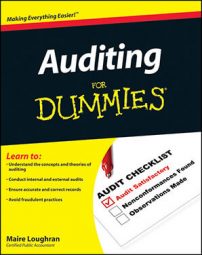Intangible assets differ from the other assets on your audit client’s balance sheet because they don’t have a physical presence and aren’t financial instruments like cash. However, like fixed assets, their expense is moved to the income statement over their useful life through amortization.
Here are some common intangible assets you’ll see during your audits:
Copyrights: When a client owns a copyright, no one else can use its printed work (such as a book) or its recorded work (such as a musical score or a movie) without permission. Any original piece of work is automatically copyrighted.
Trademarks: These are unique signs, symbols, or names that your client uses. For example, Kleenex is a trademark, and no other company that makes facial tissues can use that name.
Patents: Patents provide licensing for inventions or other unique processes and designs. Items that can be protected by patents run the gamut from pharmaceuticals to automobile circuitry to unique jewelry designs.
Goodwill: Goodwill comes into play only during the purchase of a business by another business for a price greater than the fair market value of the net assets acquired during the sale. (Net assets are total assets less total liabilities.)
Say that a company called FPD purchases another surf shop for $100,000 whose net assets are $80,000. FPD acquires $20,000 of goodwill in the transaction. Perhaps FPD pays that extra $20,000 because the other surf shop has such a great reputation or helps FPD take control of a certain market. The nature of goodwill is varied and depends on the specific circumstances of the sale.
Leasehold improvements: When a company leases its business location and updates the rental space with features it can’t take with it at the end of the lease, the updates are called leasehold improvements. These updates may involve constructing office spaces or putting in new lighting. They don’t include any repair and maintenance expenses, such as repainting the walls or fixing broken windows. Technically, leaseholds are intangible assets, but you may find that some of your audit clients include them with fixed assets.
You may hear your retail clients refer to breaking out a shop. This means they rearrange the interior to improve traffic flow around the sales merchandise and to allow for a space that’s not open to customers (to house extra inventory and provide space for the non-sales staff to work).
You should always review your client’s lease to make sure the landlord didn’t absorb all or some of the break-out costs. Depending on the supply and demand of commercial and retail rentals, who pays for these expenses is a common negotiation tool during the signing of the lease.

